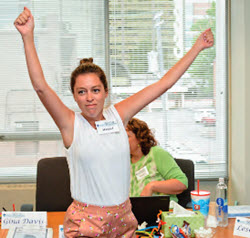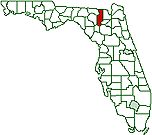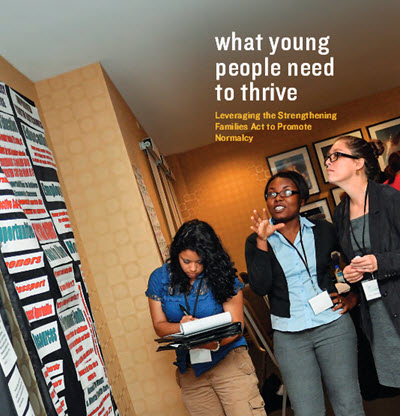Florida Helping to Change Foster-Care Experience
Posted Dec. 28, 2015 11:40 am | Public News Service
TALLAHASSEE, FL - Learning to drive, playing a sport and going on sleepovers, they're all part of what many consider a "normal" childhood, but that's not always the case for the nearly 14,000 Florida kids in foster care.
 A
new report from the Annie E. Casey Foundation shows how
the federal Strengthening Families Act can help remove
some of the barriers to typical adolescent activities.
The Foundation's senior policy associate Todd Lloyd says
prior to the law, which was passed last year, child
welfare practices did not always allow kids in foster
care to just be kids.
A
new report from the Annie E. Casey Foundation shows how
the federal Strengthening Families Act can help remove
some of the barriers to typical adolescent activities.
The Foundation's senior policy associate Todd Lloyd says
prior to the law, which was passed last year, child
welfare practices did not always allow kids in foster
care to just be kids.
"Because it has been a system oriented toward safety, protecting children, that it's very easy to create policies that are overly restrictive out of concern for safety and also the liability," says Lloyd.
 The
report emphasizes the importance of implementing all
requirements in the Strengthening Families Act,
including engaging young people in their own case
planning starting at age 14 and reducing group placement
for children.
The
report emphasizes the importance of implementing all
requirements in the Strengthening Families Act,
including engaging young people in their own case
planning starting at age 14 and reducing group placement
for children.
Many of those features already are written into
Florida's Quality Parenting for Children in Foster Care
Act, which has been in place since 2013 and served as a
model for the federal legislation.
Diane Zambito, CEO with the CBY25 Initiative, which
works with the state's providers serving at-risk youth, says there is still plenty of red tape when it
comes to the community-based agencies that the state
contracts with.
"We can put it into law all we want," says Zambito.
"Young people can get drivers' licenses, young people
can go to football, young people can take music. But if
within that organization there are liability rules and
insurance coverage and all of these things, then we have
to overcome that."
Breaking down barriers
Zambito adds that breaking down those barriers will
require all those who work with kids in foster care,
from the courts to the case workers to the foster
parents, to focus on the overall goal: to give kids a
normal life, keeping in mind that will take different
forms.
"So it's not like there can be a statewide edict that
says from now on we're going to do x, x and x, and this
is how we're going to measure it," says Zambito.
"Because the whole point of community-based care is
doing what works within your community."
According to the report, a lack of funds or
transportation, frequent moves and restrictive
child-welfare policies can inhibit a child's
relationships, decision-making skills and emotional well
being. The report recommends that kids in foster care be
able to participate in after-school activities and
camps, get school pictures, have access to a telephone,
and be able to learn to drive a car and travel with
other youth and adults.
Photos/graphics, layout, and links added by the Observer
Photos: Annie E. Casey Foundation
This piece was reprinted by the Columbia County Observer with permission or license. It may not be reproduced in any form without permission or license from the source.

